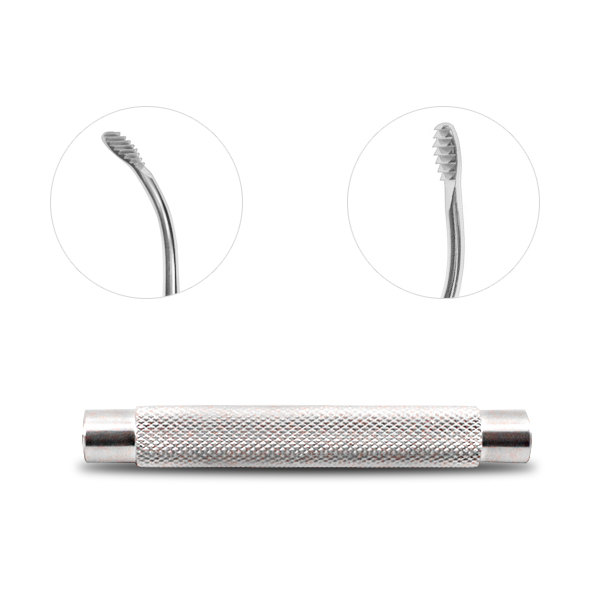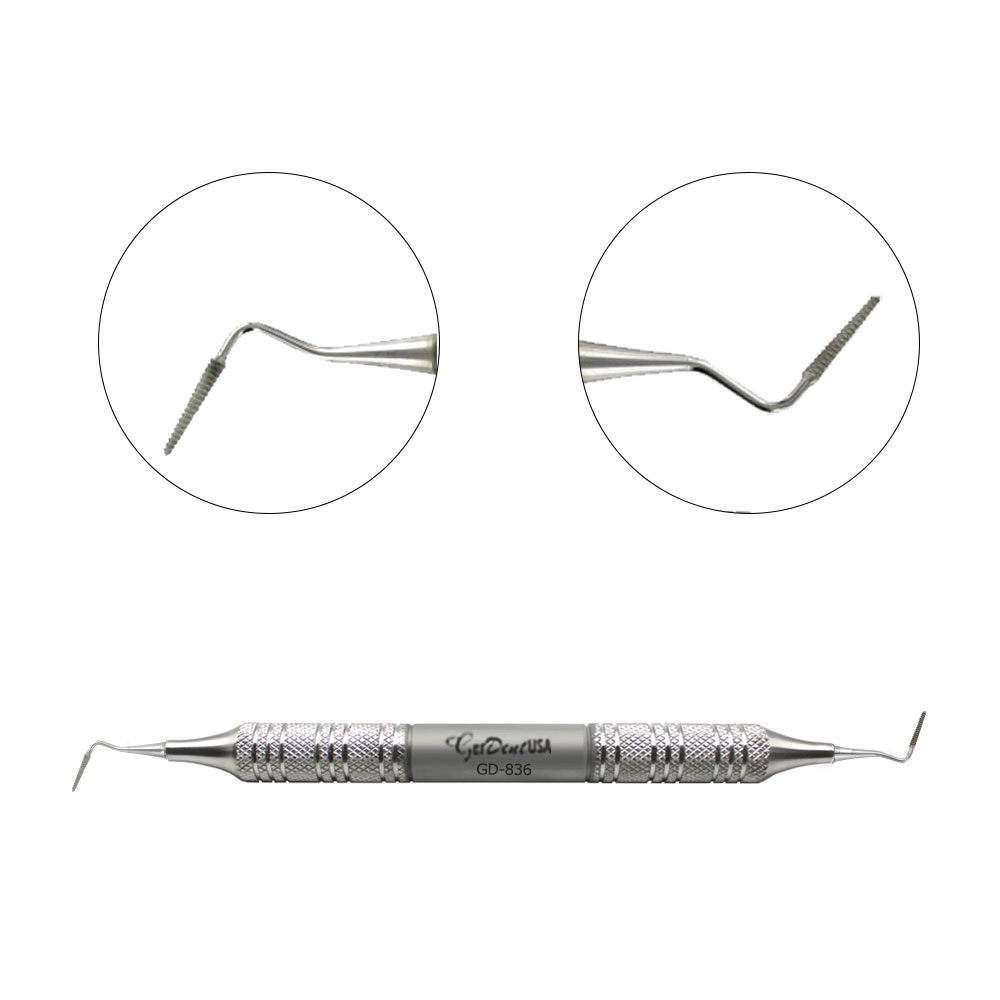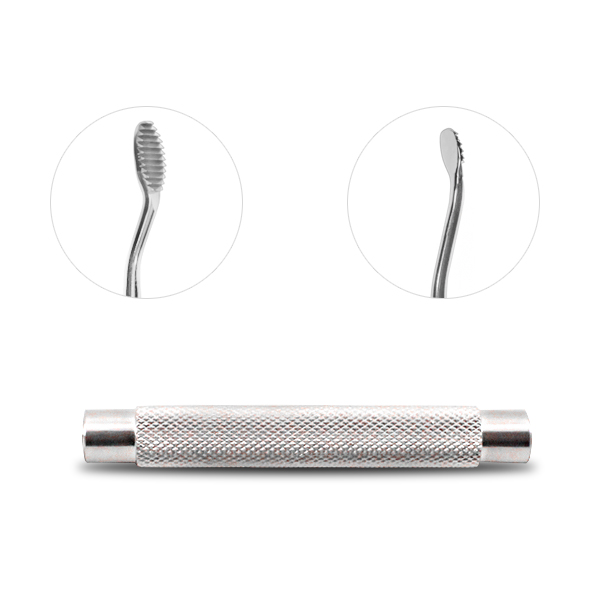Dental files are instruments used at the clinic regularly. Endodontic files are long needle-like instruments used to remove the necrotic pulp from the root canals of the teeth. Also, they come in use for enlarging, cleaning, and shaping the canal for root canal medicament. In this article, we are highlighting other dental files that are routinely used in the clinics. These are:
Bone files, as their name suggests, are long handheld instruments in dentistry. These come in use for smoothing the bone out during and after surgical procedures. These are double-sided instruments used for smoothing out the superficial bone. They are used with a pull stroke only. A push stroke is avoided with Bone files as it can burnish and crush the bone.
They come in use for the bone's final smoothing before the mucoperiosteal flap is sutured during Oral surgery. The instrument has a straight shank, and its ends have horizontal serrations to trim the bone off.
Bone files are also available in different blade designs. Working ends/ blades are available in large and small sizes to suit operators' needs. Some examples of bone files are the Wahl bone file and Miller's bone file.
Other files used in Dental surgery include the periodontal file. A periodontal file is a long handheld instrument used for crushing tenacious calculus deposits from the surface of the teeth. They have series of blades on the end of the instrument that crushes heavy calculus deposits. These instruments are long and narrow-ended. They cannot use scaling and root planing, since they can roughen root surfaces if not used properly. Hence they come in use for dislodging calculus only. Other than that, they are sometimes used for removing overhanging restorations. These files have a serrated outer body for firm gripping. Also, they have an angled shank with a narrow end to facilitate access inside the oral cavity.
Hirschfield files are periodontal files also used for removing heavy calculus deposits. These have small heads as compared to regular periodontal files. This permits their adaptation subgingivally, and the small head of the instrument facilitates removal from the buccal and lingual surfaces only. These files feature three cutting edges that need to be sharpened at the initial signs of dullness. The Hirschfield files are very useful because of their three cutting surfaces.
Design Of The Instrument:
The file design comprises a head/ working end, shank, and handle. The head is designed with serrations/ cutting edges that are far apart for a working file. These cutting edges are engaged parallel to the calculus. This causes the fracture of the heavy calculus. The files' shanks are either straight or angled and differ in length and width to facilitate adaptation and access.
How To Use The Instrument?
The detnal files instrument is grasped exactly like a curette. The fulcrum placement and engagement are similar to that of a curette. Adaptation and activation are different from curettes in the tooth-to-blade relationship and activation of strokes. The clinician has to explore the deposit well and then engage the instrument. Unlike root planning, the file is engaged on the calculus deposit and not on the root surface. If engaged on the root surface, it can cause roughness of the root surface. Short strokes are used with the instrument, and pressure is directed on the calculus to break the deposit. After each stroke, the clinician relaxes his grip to place the file head again on the calculus deposit. Again, long pull strokes are avoided as they can cause the instrument to damage the root surface.
To fracture the calculus effectively, Files are placed parallel to the calculus in different directions. The deposit can be approached from different directions, e.g., horizontally, obliquely, or vertically to cause fracture of the deposit. Hence, the crushing stroke is multidirectional, and the mass can be penetrated from various sides to cause it to fragment. To effectively do this, different kinds of fulcrums are needed. Cross arch fulcrums come in use for proximal areas, and opposite arch fulcrums come in use for posterior maxillary area
Files are criticized as they cannot effectively adapt subgingivally to the root surfaces. However, file use is indicated only for moderate to heavy calculus deposits. Other dentistry instruments are designed to remove calculus from the cementum. Also, dental file use is not indicated for the removal of bacterial plaque. This is because the toxin that is driven from the bacteria is not as adherent to the tooth surface as calculus is. Therefore another armamentarium comes in use for its removal.
Sequencing of instruments is crucial for nonsurgical periodontal therapy to be successful. Periodontal files are used before ultrasonic scaling or curetting. Or, they can be used during the process with ultrasonic scalers or curettes.
Periodontal files come into use when due to the patient's health; Use of ultrasonic scalers has to be avoided. Hence, files are used to break heavy chunks of calculus, followed by removing the rest of the calculus by curettes. Also, they are contraindicated when there is an absence of tenacious or heavy deposits of calculus. Other than that, periodontal files are not used for overhanging flash type restorations or overhanging restorations of class 1 type. For these, a curette or other instruments typically come in use—all in all, periodontal file use in therapy aids in removing plaque retentive overhanging amalgam restorations.
Instrument Maintenance:
Instruments should be inspected before use. The sharpness of the blades and grip of the instrument is examined before any surgical procedure. Other than that, routine examination of all instruments needs to be carried out to avoid any inconveniences. Sharp blades tend to get dull over time. Preliminary examination and routine inspection should be carried out.
We offer customization of instruments. Customization is for practicing doctors who may have innovative ideas for instrument design. Hence, we encourage all our customers to develop innovative designs to make your clinical experience better. We want to provide the best for the healthcare market today and in the future.




